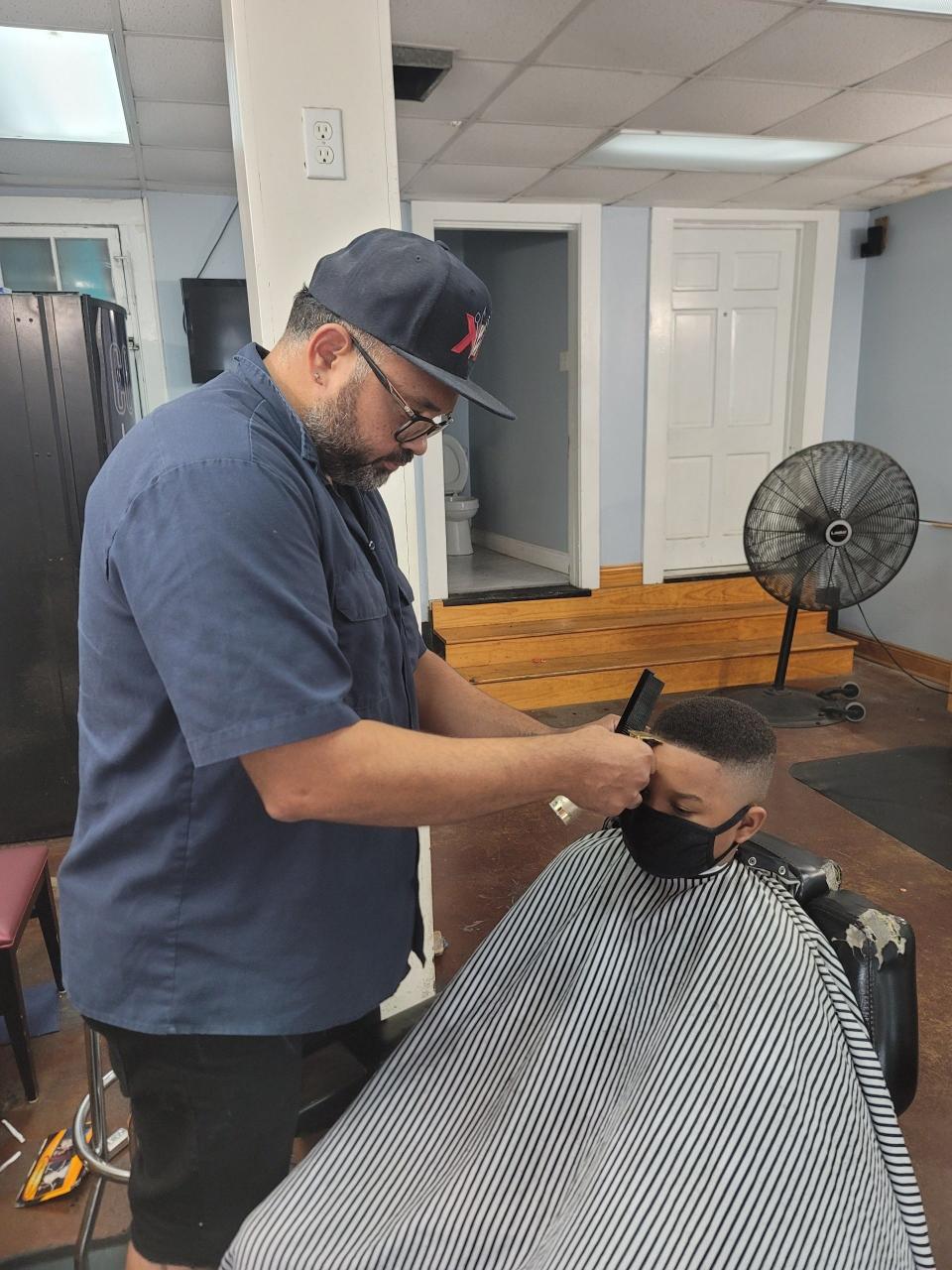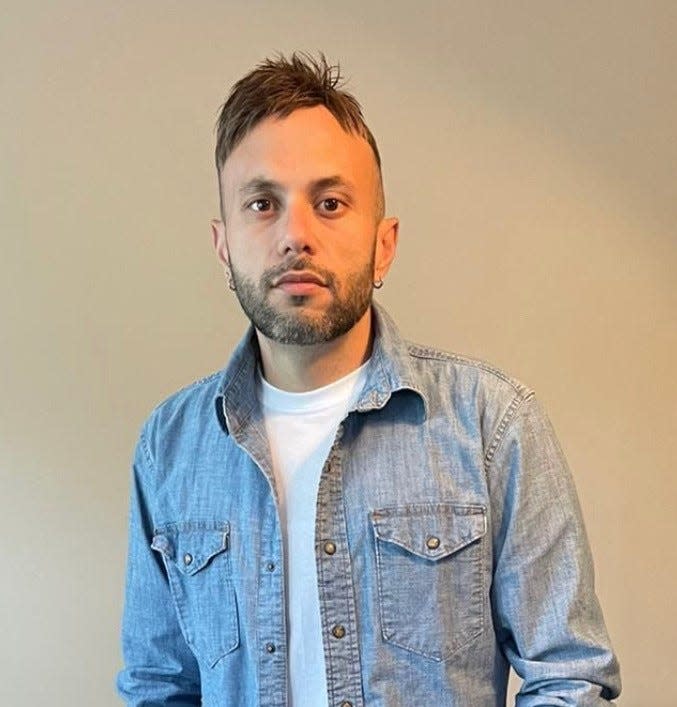Amid climbing COVID cases and community efforts, racial disparity in vaccinations appears to be narrowing
When Taeyo Suarez got COVID-19 last year, he didn't think he was going to make it.
The New Orleans barbershop owner was hesitant to get the vaccine though, worried the shot might make him that sick again. But as cases began to spread with the more transmissible delta variant, ravaging unvaccinated communities, he couldn't bear the thought of his four children getting sick.
"I felt like I was on my deathbed. I thought it was the end for me, and I had no previous issues with health," said Suarez, 39.
So last Tuesday, he rescheduled some of his clients at Kutt Kreatorz and got his first dose of the Pfizer-BioNTech vaccine at a pop-up event in an auto repair shop.
"It was the best decision to try to protect the kids as much as possible," he said.
Poll: Vaccinated adults are more concerned about delta variant of COVID-19 than the unvaccinated
Months into the nation’s unprecedented COVID-19 vaccination effort, disparities in vaccinating underserved populations have been stark, with data showing white people getting the shot at faster rates than Black and Hispanic people.
Experts say that could be changing, as fears mount amid the new case surge and grassroots vaccination efforts begin to pay off.

Over the past two weeks, people of color have been vaccinated with a first dose of COVID-19 vaccine more than white people when compared to their shares of the population, according to the latest CDC data. Though race and ethnicity information is only available for about 60% of the U.S. population, it shows a glint of promise, experts say.
While Hispanic and Latino people make up 17% of the nation's population, they totaled more than a quarter of those who initiated vaccination in the past two weeks. Similarly, Black people, who make up about 12% of the U.S. population, accounted for 15% of those receiving a first dose.
During the same period, as new COVID-19 cases climbed in areas with low vaccination rates, white people were underrepresented in the vaccine line. Of those who initiated their first dose, 44% were white, though the group makes up 61% of the population.
Florida tops the nation in new COVID cases: As they spike in its rural Big Bend, many still fear the vaccine more.
“What those patterns suggest is that there's a narrowing of racial gaps in vaccinations at the national level,” said Samantha Artiga, vice president and director of the Kaiser Family Foundation’s Racial Equity and Health Policy program. “That narrowing may continue as the total number of vaccinations provided has increased in recent weeks.”
State-by-state analyses, such as those by KFF, consistently showed white people were more likely than Black and Hispanic people to get the shot. But those gaps have been slowly closing over time, Artiga said.
Public health experts and clinicians say this could be a signal grassroots efforts by community groups have been successful and should continue.
"What we advocated for early on in our work is that vaccination campaigns really take a geographic focus. That they really focus on where the virus has been to really engage very locally with community organizations, with community leaders," said Dr. Kirsten-Bibbins Domingo, a professor of epidemiology and biostatistics and co-founder of the Center for Vulnerable Populations at the University of California, San Francisco.
"All of our both on-the-ground experience in communities as well as our numerical modeling ... has suggested that that is an approach that definitely bears fruit."
It worked for Jamel Godoy, 38, a recent immigrant from Venezuela. Godoy received his first dose at a Saturday vaccination event held at the popular South American grocery store, La Unica Super Center Internacional in Greenville, South Carolina, where close to 10% of the population are Hispanic or Latino.
Three months ago, Godoy, who suffered from obesity and recently had gastric bypass surgery, fled to the U.S. from political turmoil in Venezuela, where COVID-19 vaccines are scarce.
“My uncle, a very close family member, passed away from COVID, and many close family members have been near death from COVID,” Godoy said through a translator.

He heard about the vaccine event while taking his mother to a mobile health unit by Prisma Health and PASOs, a local Latino health advocacy organization. He says the group has been helpful to his mother, who moved to the U.S. three months before him.
Godoy is a housekeeping assistant at a local hotel. Because many Latinos are overrepresented in essential jobs in the Greenville area, “things get a little more complex" to get a shot, said Rut Rivera, a community health worker and program manager at PASOs. Many work in service, food, and agriculture, and schedules make it difficult to take off from work to get the shot. Rivera said that’s why the groups hold vaccination events on Saturdays.

Barbers, stylists help combat vaccine hesitancy in Maryland: 'They have a trust with us'
CommuniVax, a COVID-19 vaccine equity coalition with teams in five states – Maryland, Virginia, Alabama, Idaho and California – has been working to improve vaccine campaigns within Black and Latino populations.
Monica Schoch-Spanas, a medical anthropologist and senior scientist at the Center for Health Security, is CommuniVax’s co-chair. She said groups have found success with neighborhood-level partners and leaders who have established in-roads and trust.
“You have community-led groups playing a principal role now in community vaccine response,” said Schoch-Spanas. “Systems are getting better. They're not perfect by any means, but they're getting better and reaching more underserved populations better.”

Schoch-Spanas, who specializes in epidemics and public health emergency preparedness, said awareness of the highly contagious delta variant also has been vaccination catalyst, especially among those who took a “wait-and-see” approach.
“People will say, ‘OK, how risky is the vaccine versus how risky is the disease?’ And now, the balance is tipping,” she said. “You’ve got this middle ground of watchfulness. … We do know from other kinds of disasters that environmental cues signal to people that something needs to be done to protect themselves.”
People with kidney failure are at high risk from COVID-19: Dialysis clinics are doling out vaccine doses to protect them
Epidemiologist Myriam Torres, is director of the University of South Carolina’s Consortium for Latino Immigration Studies. She said awareness of specific barriers for Hispanic people and local efforts such as those by PASOs to reach Spanish-speakers in rural areas of her state have helped.
The personal is also powerful.
“This is getting to us more as opposed to groups that are more politically inclined to say no to the vaccine,” said Torres, who is Latina.
“Seeing our family members, our friends being affected by this, dying from this ... people decide, 'OK, I need the vaccine,'” Torres said.
Reach Nada Hassanein at nhassanein@usatoday.com or on Twitter @nhassanein_.
This article originally appeared on USA TODAY: COVID-19 vaccinations among Latinos, Blacks on the rise, data suggests

 Yahoo Movies
Yahoo Movies 
